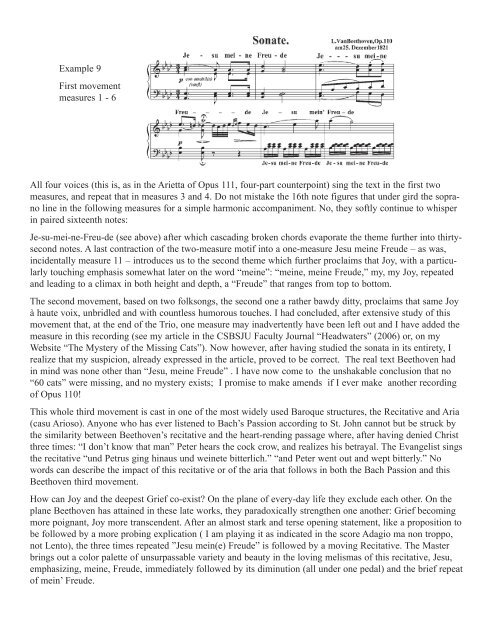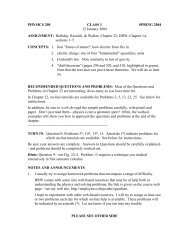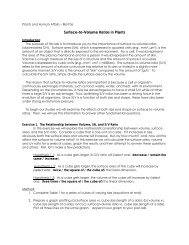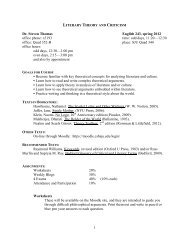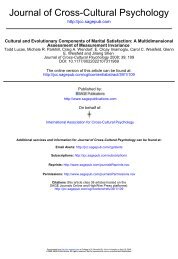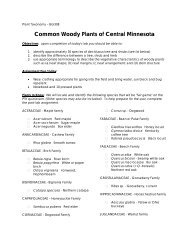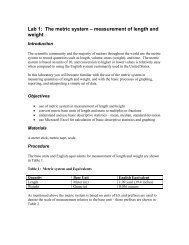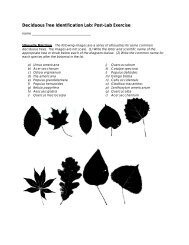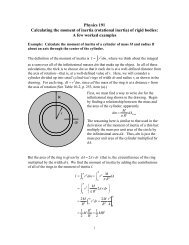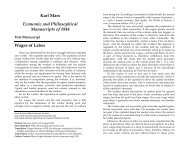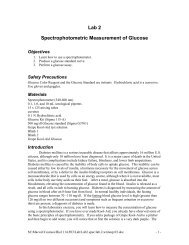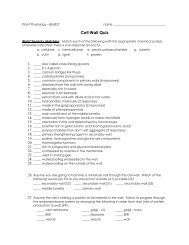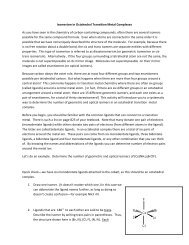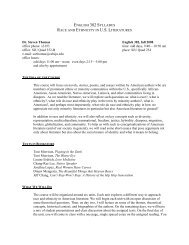A Beethoven Triptych - Employees Csbsju
A Beethoven Triptych - Employees Csbsju
A Beethoven Triptych - Employees Csbsju
Create successful ePaper yourself
Turn your PDF publications into a flip-book with our unique Google optimized e-Paper software.
Example 9<br />
First movement<br />
measures 1 - 6<br />
All four voices (this is, as in the Arietta of Opus 111, four-part counterpoint) sing the text in the first two<br />
measures, and repeat that in measures 3 and 4. Do not mistake the 16th note figures that under gird the soprano<br />
line in the following measures for a simple harmonic accompaniment. No, they softly continue to whisper<br />
in paired sixteenth notes:<br />
Je-su-mei-ne-Freu-de (see above) after which cascading broken chords evaporate the theme further into thirtysecond<br />
notes. A last contraction of the two-measure motif into a one-measure Jesu meine Freude – as was,<br />
incidentally measure 11 – introduces us to the second theme which further proclaims that Joy, with a particularly<br />
touching emphasis somewhat later on the word “meine”: “meine, meine Freude,” my, my Joy, repeated<br />
and leading to a climax in both height and depth, a “Freude” that ranges from top to bottom.<br />
The second movement, based on two folksongs, the second one a rather bawdy ditty, proclaims that same Joy<br />
à haute voix, unbridled and with countless humorous touches. I had concluded, after extensive study of this<br />
movement that, at the end of the Trio, one measure may inadvertently have been left out and I have added the<br />
measure in this recording (see my article in the CSBSJU Faculty Journal “Headwaters” (2006) or, on my<br />
Website “The Mystery of the Missing Cats”). Now however, after having studied the sonata in its entirety, I<br />
realize that my suspicion, already expressed in the article, proved to be correct. The real text <strong>Beethoven</strong> had<br />
in mind was none other than “Jesu, meine Freude” . I have now come to the unshakable conclusion that no<br />
“60 cats” were missing, and no mystery exists; I promise to make amends if I ever make another recording<br />
of Opus 110!<br />
This whole third movement is cast in one of the most widely used Baroque structures, the Recitative and Aria<br />
(casu Arioso). Anyone who has ever listened to Bach’s Passion according to St. John cannot but be struck by<br />
the similarity between <strong>Beethoven</strong>’s recitative and the heart-rending passage where, after having denied Christ<br />
three times: “I don’t know that man” Peter hears the cock crow, and realizes his betrayal. The Evangelist sings<br />
the recitative “und Petrus ging hinaus und weinete bitterlich.” “and Peter went out and wept bitterly.” No<br />
words can describe the impact of this recitative or of the aria that follows in both the Bach Passion and this<br />
<strong>Beethoven</strong> third movement.<br />
How can Joy and the deepest Grief co-exist On the plane of every-day life they exclude each other. On the<br />
plane <strong>Beethoven</strong> has attained in these late works, they paradoxically strengthen one another: Grief becoming<br />
more poignant, Joy more transcendent. After an almost stark and terse opening statement, like a proposition to<br />
be followed by a more probing explication ( I am playing it as indicated in the score Adagio ma non troppo,<br />
not Lento), the three times repeated ”Jesu mein(e) Freude” is followed by a moving Recitative. The Master<br />
brings out a color palette of unsurpassable variety and beauty in the loving melismas of this recitative, Jesu,<br />
emphasizing, meine, Freude, immediately followed by its diminution (all under one pedal) and the brief repeat<br />
of mein’ Freude.


